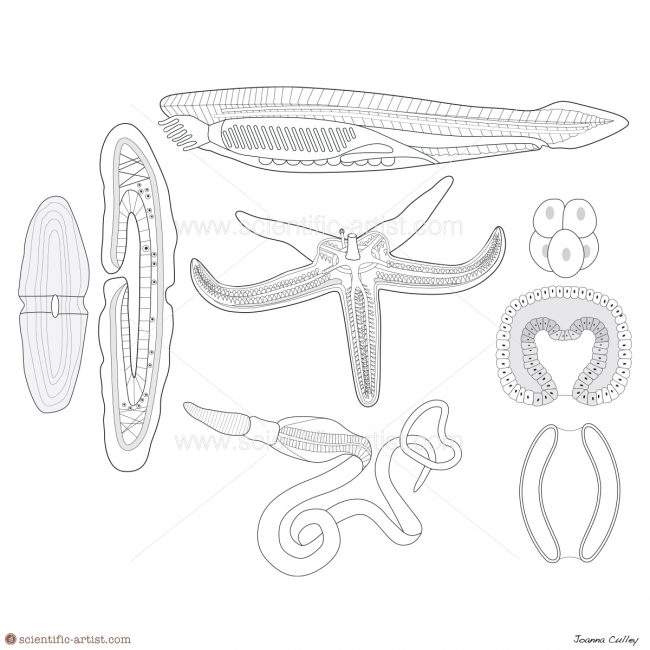Deuterostome Animals
- Title
- Deuterostome Animals
- Medium
- Digital line work
Illustration Description
Deuterostomes animals contain four lineages of animals: echinoderms, hemichordates, xenoturbellids and chordates.
The name deuterostome means “mouth second”, and refers to a developmental feature unique to this group. In the earliest stages of embryo development, when there are only a few cells and the embryo resembles a tiny globe of cells, a small collection develops on one side of the embryo. This grows into a pocket, where the inner and outer layer of cells meet; the anal opening develops later. In the Deuterostomia, the reverse is true; the pocket edge develops into the anus, and the mouth is formed later. Hence the meaning ‘mouth second.’
Echinoderms include sea stars, sea urchins, and sea cucumbers. Echinoderms are also united by the presence of a calcium carbonate endoskeleton and a system of fluid filled tubes called the water vascular system. Chordates are animals that display four key characteristics, at some time in their life cycle. Xenoturbellids and hemichordates are small groups of animals. Hemichordates which includes the burrowing acorn worms, xenoturbellids are small, ciliated worm-like animals that consist of only one genus with two species.
